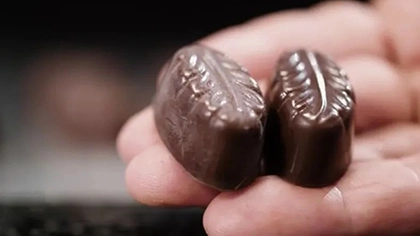01 Mar 2023
The selection of solid forms of drugs is an important factor to be considered in the study of drug preparations. The solid form of drugs mainly includes polycrystalline form, salt, hydrate or solvate, and eutectic form. In the pre-prescribing stage, the solid form of the drug should be selected according to the properties of the drug and the requirements of the target preparation. Due to the few kinds of solvates and salts or the few applicable drugs, the application of eutectic has been limited. Therefore, eutectics with many kinds and a wide application range has attracted more and more attention as a designable solid form of drugs in recent years.
Drug Eutectic
Eutectic can enrich the solid form of drugs, especially for amorphous, non-dissociated or low PKA active pharmaceutical ingredients. Eutectic is an important means to change the solid form of drugs. At the same time, for some drugs protected in relevant laws and patents, eutectics can get rid of the constraints and achieve a breakthrough in patent protection. Therefore, screening the best solid properties of drugs plays an important role in drug research and clinical application.
Eutectic can significantly improve the physicochemical properties of API without destroying covalent bonds, such as melting point, solubility, permeability, stability, bioavailability, mechanical properties, etc. In addition, eutectic has good applications in masking drug taste, improving drug tablet performance, and expanding production. In the study of eutectic compounds can be effectively screened by formulation development companies according to the solubility characteristics, chemical structure, medicinal efficacy, targeting, and so on.
Eutectic screening is an experimental process to determine whether a candidate for a eutectic formation (CCF) can crystallize with a known API.
When conducting eutectic screening research, it is very important to understand the formation process of eutectic. Common preparation methods of drug eutectic are mainly divided into solution method (solution evaporation method, reaction crystallization method, and cooling crystallization method) and grinding method (dry grinding method and wet grinding method). There are also some rare preparation methods of eutectic. Such as the gel method, hot melt extrusion method, spray drying method, thermal microscopy method, and super boundary fluid method.
There are many methods for screening eutectic drugs, including high-throughput crystallization screening technology, supercritical fluid enhanced spray technology, solution method, grinding method, etc. In addition, there are screening methods based on Cambridge Crystal Structure Database, thermodynamic methods (hot table microscopic screening method, differential scanning calorimetry), and suspension crystallization screening method. For example, in situ Raman spectroscopy combined with high-throughput technology can efficiently screen the eutectic formation of indomethacin with 48 eutectic formations. Indomethacin - saccharin eutectic was successfully synthesized by supercritical fluid enhanced spray technique.
ⅰ High throughput crystallization screening technology
The concept of high-throughput screening is introduced into the selection of solid forms of drugs to produce as many solid forms as possible under different crystallization conditions in a combinatorial approach. Using the smallest number of samples to provide the largest variety of crystallization conditions for faster and more systematic crystal screening.
ⅱ Supercritical fluid enhanced spray technology
The supercritical fluid method usually uses supercritical CO2 as a solvent medium to produce intermolecular force between API and eutectic formation, and then decompresses to precipitate eutectic.
Ⅲ solution method
The solution method includes solvent evaporation, reaction crystallization, cooling crystallization, and melting crystallization. Only when the solubility of API and eutectic formation in the solvent is comparable, the simple solvent evaporation method can be used to prepare eutectic. However, when the solubility of API and eutectic formation in the solvent is quite different, the solvent evaporation method cannot be used, because there is a possibility that eutectic components may separate out. First in reactive crystallization method has larger solubility in the solvent of a eutectic composition of the saturated or nearly saturated solution, and then to the solution to join the other crystal components in total, two components by noncovalent bond, eutectic generated gradually, when the concentration of eutectic reaches saturation, precipitate eutectic product, although this method can be prepared solubility differences of the two components of eutectic, however, it is difficult to control the amount of reactant and the choice of solvent, and the reaction products are not pure drug eutectic in general.
Ⅳ grinding method
With the help of mechanical force, API and eutectic formation are combined and eutectic. The dry grinding method hardly requires the use of organic solvents and does not consider the solubility of drugs and eutectic formations. The grinding method is not suitable for industrial production because it is difficult to select the proper grinding speed, grinding time, and strength.
ⅴ Screening based on Cambridge Crystal Structure Database
The crystal data contained in the Cambridge Crystal Structure Database (CSD) can provide a large amount of relevant structural information, such as the types and properties of chemical bonds connecting crystal molecules and groups involved in the formation of chemical bonds, etc. Using these structural data, the possibility of supramolecular interaction between API and eutectic formation is firstly analyzed theoretically, which makes the selection of eutectic formation easier. This method can only confirm the relevant probability of eutectic formation, but cannot determine the binding site between API and eutectic formation. Therefore, other methods are needed to judge whether eutectic formation can be achieved.
Suspension ⅵ crystallization screening method
Means a method for screening eutectic in a liquid system containing API and eutectic formations in an undissolved state. Compared with dissolved state and solid state, when API and eutectic formation are both in suspension state, the possibility of single component crystallization is reduced and the possibility of eutectic formation is greater.
Characterization of drug eutectic
For the characterization of drug eutectic, Often use X-ray single crystal diffraction, X-ray powder diffraction, infrared spectroscopy, Raman spectroscopy, differential scanning calorimetry, solid-state nuclear magnetic resonance (NMR) spectroscopy, scanning electron microscope (sem), and terahertz spectroscopy to characterize the fundamental physical and chemical properties of eutectic (the change of the melting point, solubility enhancement, improving natural dissolution and stability, tableting performance enhancement and drug metabolism Mechanical and bioavailability improvements, etc.).

